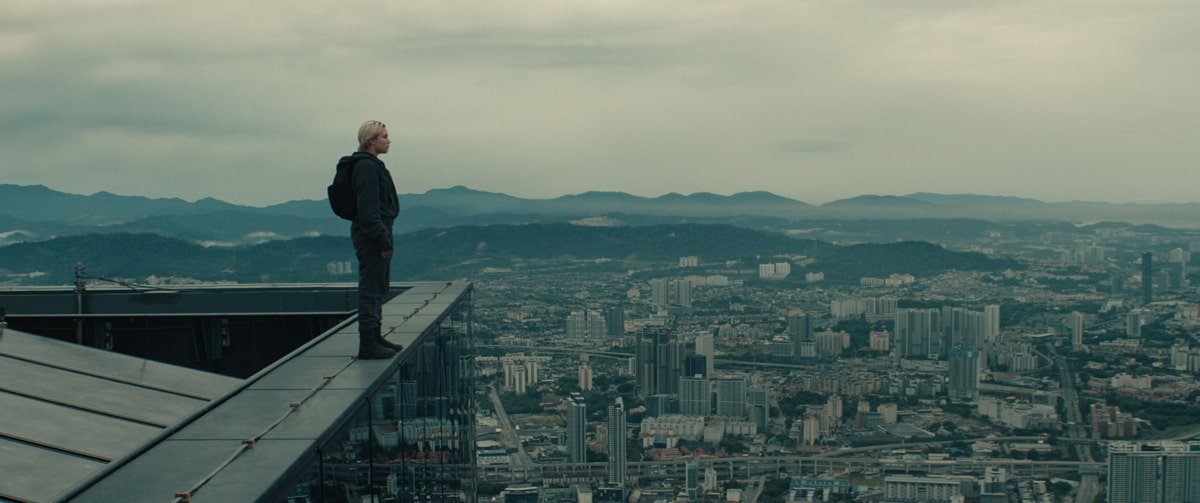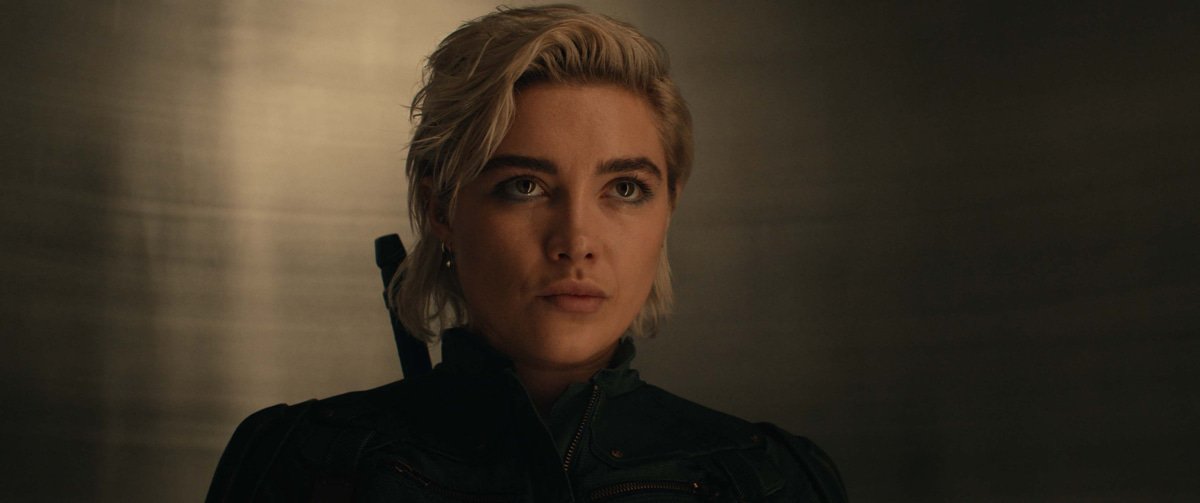'Thunderbolts*' Review: Florence Pugh and Sebastian Stan Lead a Gratifyingly Fresh and Soulful Marvel Adventure
© 2025 MARVEL. ALL RIGHTS RESERVED
Thunderbolts* surprises with emotional sincerity and fractured humanity in one of Marvel’s most grounded team-ups yet.
Florence Pugh and Sebastian Stan helm Marvel’s most intellectually and emotionally complex ensemble film to date — a reflective and deliberately restrained intervention in a genre otherwise characterized by hypertrophic bombast. At a moment when superhero fatigue manifests not only in audience attrition but also in creative inertia, Thunderbolts* enters the discourse as a cinematic palimpsest: stripping away canonical grandeur to foreground psychological fragmentation, ethical ambiguity, and the radical potential of failure. It is a film of minor chords and intimate battles, where the stakes, though global in appearance, are most fiercely contested within.
Directed by Jake Schreier with a narrative crafted by Joanna Calo and Eric Pearson, the film constitutes a studied departure from Marvel’s typical formulaic aesthetic. Eschewing sardonic repartee and hollow triumphalism, Thunderbolts* adopts a dramaturgical posture more akin to tragic realism. It interrogates not the apotheosis of power, but the disintegration of identity in its wake. Trauma here is neither narrative scaffolding nor motivational shorthand — it is an ontological condition that governs every relational dynamic. The film resists tidy moralism and instead lingers in the mess of moral uncertainty.
© 2025 MARVEL. ALL RIGHTS RESERVED
Florence Pugh's portrayal of Yelena Belova reconfigures the assassin archetype into a site of existential inquiry. Grief, often reduced to narrative inertia in genre films, becomes her operative mode. Pugh's performance is a masterclass in affective modulation, exploring the phenomenology of loss through nuance rather than melodrama. Her silence is often more telling than her words. Similarly, Sebastian Stan’s Bucky Barnes ceases to function as an allegorical Cold War cipher and instead becomes a man suspended between memory and moral recalibration. Stan’s restraint, far from being inert, manifests as a poignant resistance to melodramatic reductionism — his scenes vibrate with unspoken tension and barely constrained despair.
The film’s ensemble cast excels in providing varied tonal and emotional textures. Wyatt Russell’s portrayal of John Walker renders a man chafing against the limits of institutional ideology. David Harbour infuses Red Guardian with a sardonic humanity that defies caricature. Julia Louis-Dreyfus’s Valentina is particularly chilling — a performance of bureaucratic villainy that echoes contemporary political manipulations. These characters do not merely populate the film’s narrative; they operate as moral and psychological counterpoints, mirroring the protagonist’s internal fractures. Each interaction feels like a prism refracting the central themes of guilt, failure, and identity.
© 2025 MARVEL. ALL RIGHTS RESERVED
Among the most resonant performances is Lewis Pullman’s Bob, whose disorientation and vulnerability evoke broader critiques of institutional violence and medicalized control. His journey is emblematic of the MCU’s growing engagement with the trauma of systemic experimentation, government oversight, and the commodification of the individual. His character destabilizes the hierarchy of power within the group, becoming an unlikely emotional nucleus. Pullman delivers his lines with the fragility of someone constantly reconstituting themselves moment by moment, and the film is stronger for it.
© 2025 MARVEL. ALL RIGHTS RESERVED
Cinematographer Andrew Droz Palermo constructs a world bathed in fractured light and shadow. His commitment to textured visuals and spatial dynamism offers a welcome contrast to the digital sterility often associated with blockbuster aesthetics. The tactile mise-en-scène, paired with Son Lux’s erratic, experimental score, generates an audiovisual landscape that complements the film’s thematic ambitions. Every frame feels curated to reflect inner psychic states, not just action beats. The visual language never overwhelms but instead augments the internal dramas being explored.
One of Thunderbolts*’ most innovative conceits is its metaphysical device — the "interconnected shame rooms." These symbolic spaces of recursive trauma extend beyond conventional flashbacks or psychological exposition. Instead, they become experiential environments wherein characters confront their own historical residues. Rather than functioning as exposition, these sequences forge moments of genuine emotional transfiguration, evoking a moral complexity that resists narrative closure. These rooms offer no solutions, only reflection — a strikingly mature turn for a genre that often privileges resolution above resonance.
Crucially, the film denies its characters — and its audience — the comfort of heroic finality. Redemption is not offered as a narrative endpoint but interrogated as an ideological construct. The Thunderbolts do not conform to archetypes of heroism; they persist as fractured subjectivities, their purpose not clarity but survival. The film’s willingness to linger in that ambiguity is among its most radical acts. It demands patience, introspection, and the courage to dwell in ambiguity — qualities not often associated with superhero fare.
© 2025 MARVEL. ALL RIGHTS RESERVED
Action set pieces are deployed sparingly and meaningfully, subordinated to the demands of character and theme. The desert escape and an urban confrontation are choreographed not for aesthetic exuberance, but for their narrative impact and symbolic resonance. These sequences punctuate rather than overwhelm, inverting the genre’s traditional balance of form and function. Every punch, every leap, is imbued with psychological weight. The choreography becomes a narrative language in itself, speaking volumes about character motivation and emotional state.
POPULAR ON THE CINEMA GROUP
Thunderbolts* gestures toward future entries without capitulating to franchise logic. The post-credits scene offers a continuation, but the film’s value is self-contained — a philosophical engagement with the genre’s exhausted tropes and a vital reimagining of what superhero cinema can accomplish. Rather than expanding the universe outward, it tunnels inward, toward character depth and thematic density.
In an entertainment ecosystem dominated by spectacle and formula, Thunderbolts* insists on emotional verisimilitude and intellectual rigor. It reflects a nascent shift in the MCU, a recognition that the future of the franchise may not rest in escalation, but introspection. In doing so, it speaks to a larger cultural hunger for stories that center brokenness not as a detour, but as the narrative destination. The film suggests that true heroism may not lie in saving the world, but in confronting one’s own failure — and choosing to act anyway.













